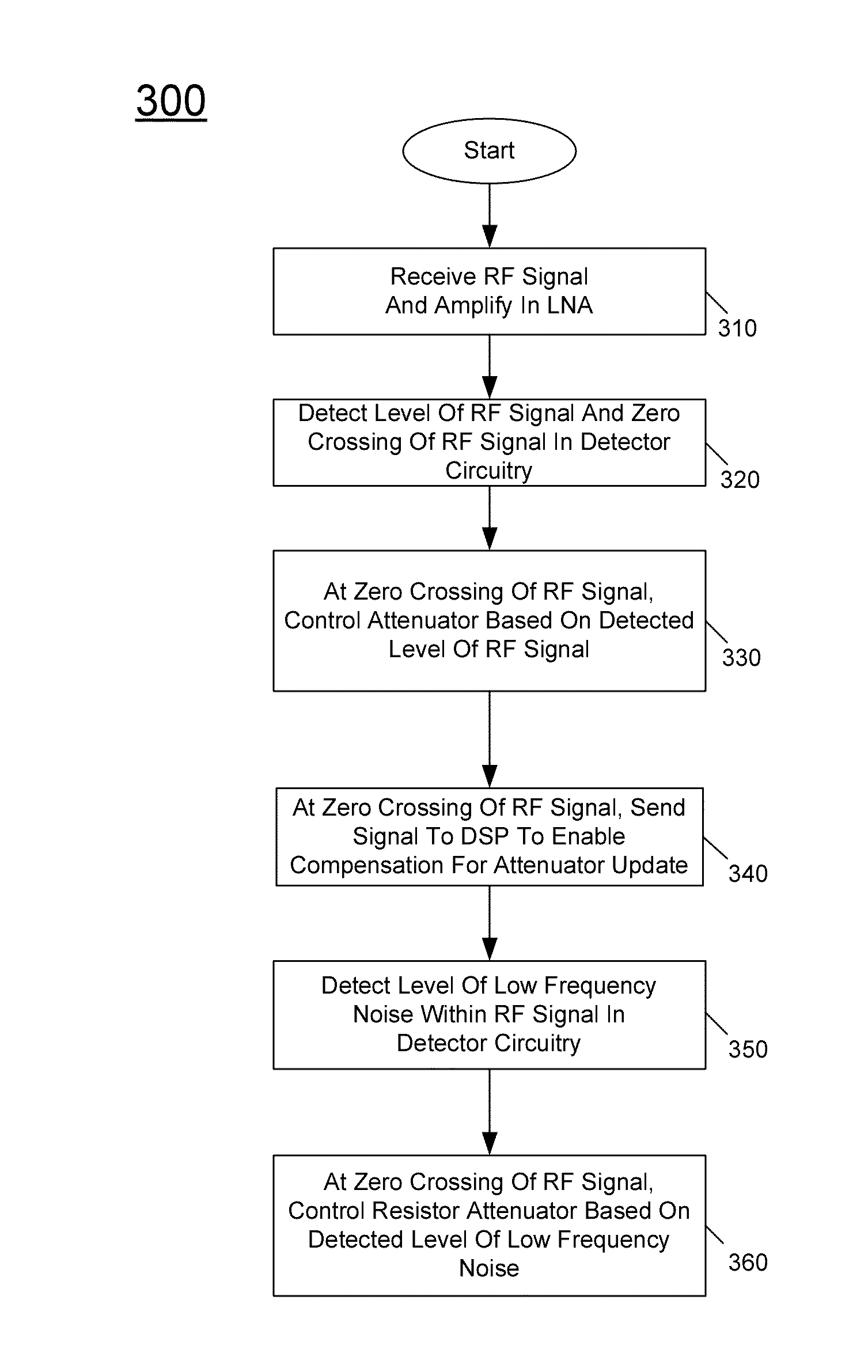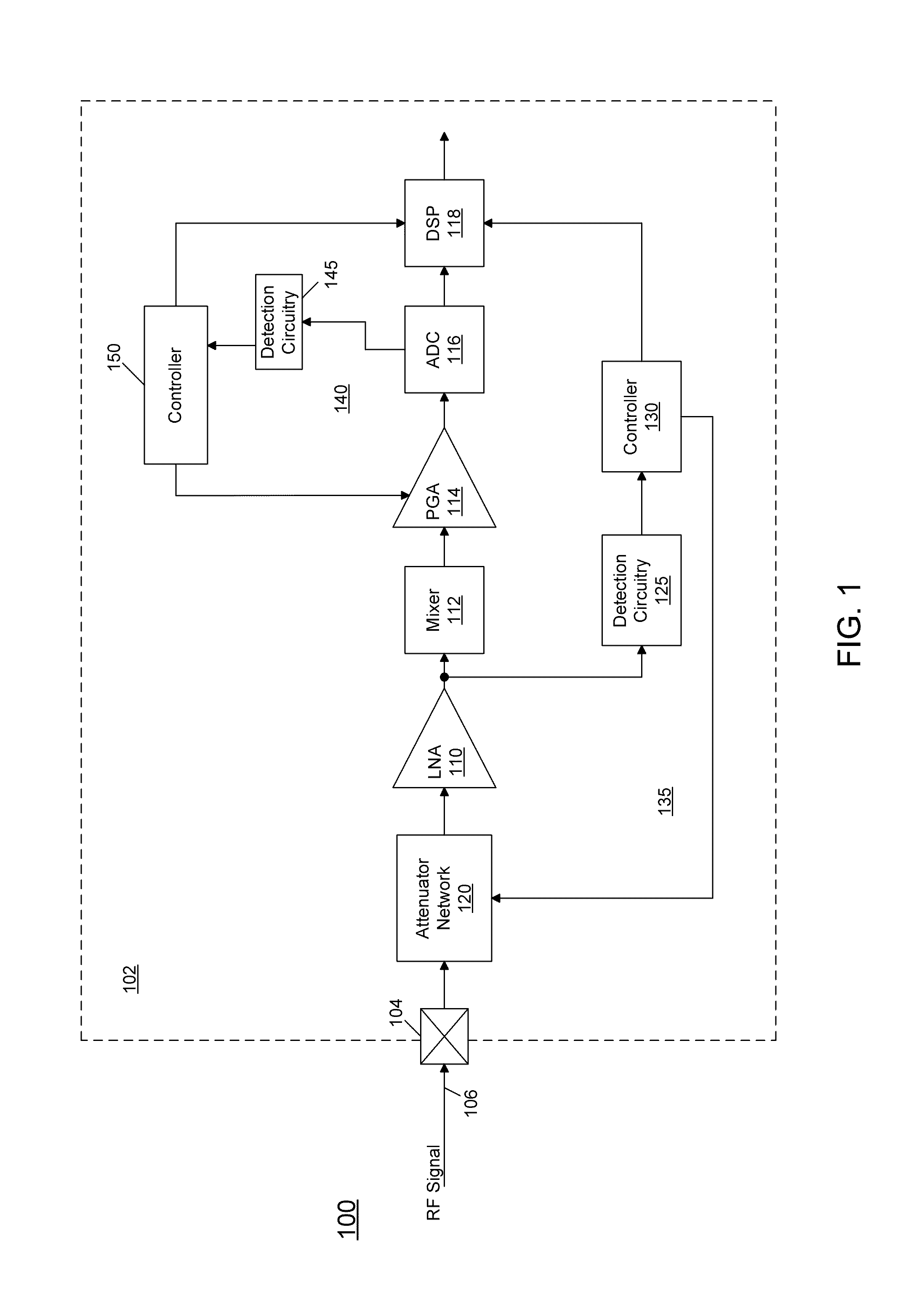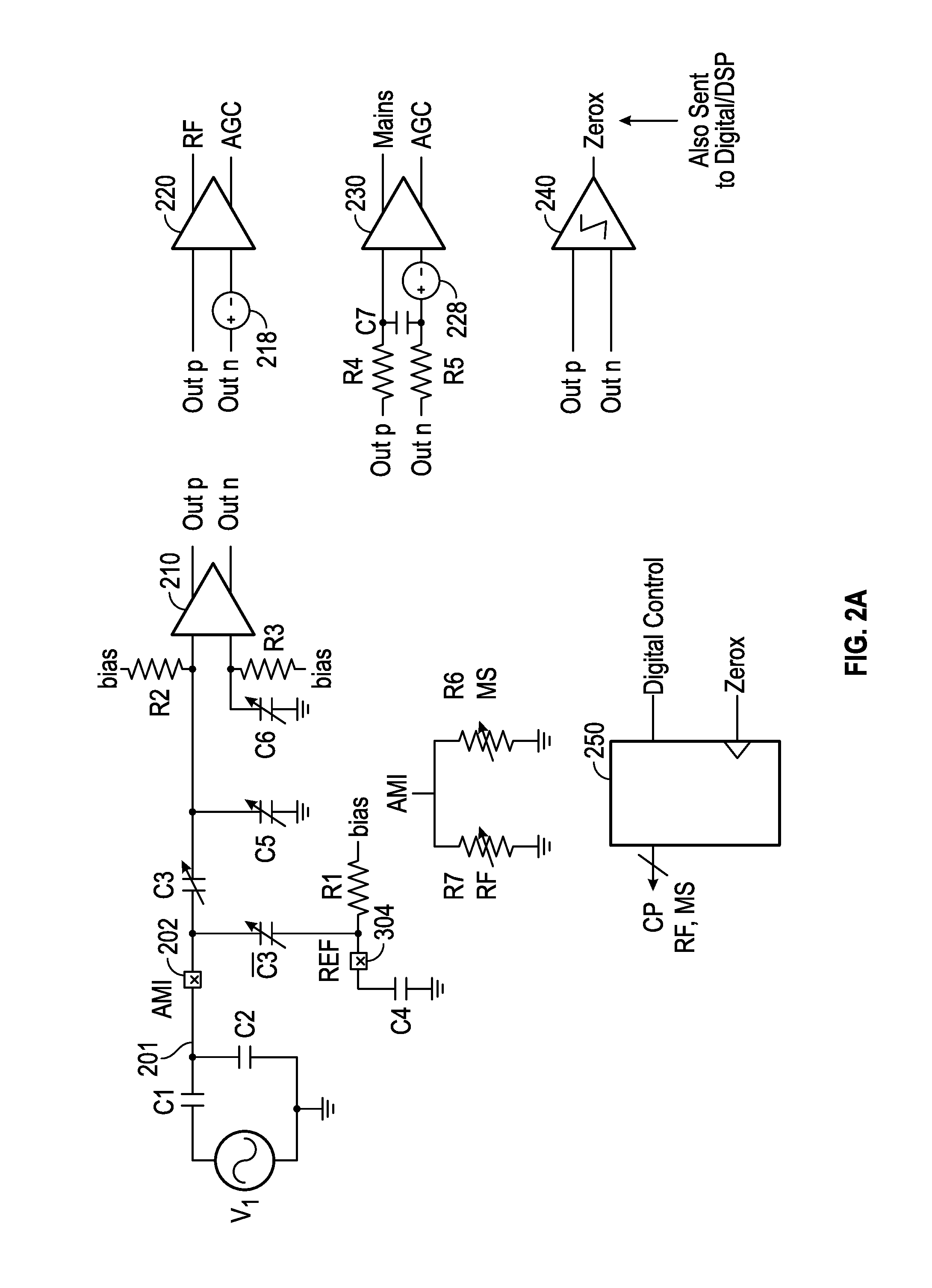Radio Receiver Having Enhanced Automatic Gain Control Circuitry
- Summary
- Abstract
- Description
- Claims
- Application Information
AI Technical Summary
Benefits of technology
Problems solved by technology
Method used
Image
Examples
Embodiment Construction
[0015]In various embodiments, a radio receiver includes circuitry to detect signal strength present across a wide range of frequencies received in the receiver and to automatically and independently attenuate and filter in at least several different ranges. In an embodiment a radio receiver, which may be configured as a single semiconductor die of an integrated circuit (IC), includes an input terminal for receiving a radio frequency (RF) signal and one or more attenuation networks coupled to the input terminal. The attenuation network(s) are controlled responsive to one or more control signals from a controller to selectively adjust at least one of a resistive attenuation to filter low frequency noise and a capacitive attenuation, which is wideband and variable to attenuate all frequencies, to apply a desired attenuation to the RF signal.
[0016]As used herein, the term “RF signal” refers to a signal having a frequency within a range of about 100 kilohertz (kHz) to several gigahertz. ...
PUM
 Login to View More
Login to View More Abstract
Description
Claims
Application Information
 Login to View More
Login to View More - R&D
- Intellectual Property
- Life Sciences
- Materials
- Tech Scout
- Unparalleled Data Quality
- Higher Quality Content
- 60% Fewer Hallucinations
Browse by: Latest US Patents, China's latest patents, Technical Efficacy Thesaurus, Application Domain, Technology Topic, Popular Technical Reports.
© 2025 PatSnap. All rights reserved.Legal|Privacy policy|Modern Slavery Act Transparency Statement|Sitemap|About US| Contact US: help@patsnap.com



